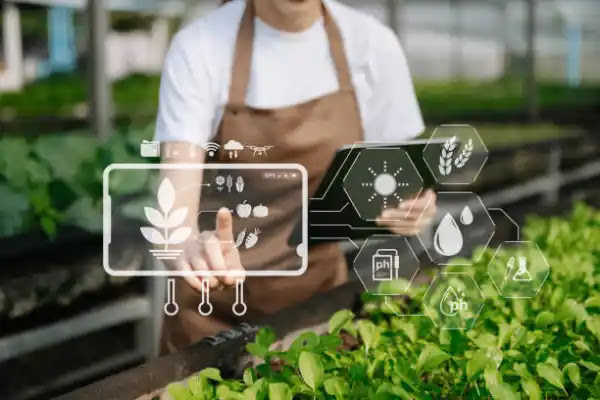Featured
- Get link
- X
- Other Apps
Revolutionizing Agriculture through Smart Farming Initiatives
Trickle Technology: Smart Farming Initiatives
Introduction
Trickle technology, commonly known as drip irrigation, has
emerged as a cornerstone of smart farming initiatives aimed at revolutionizing
agriculture. By delivering water directly to the root zone of plants with
precision and efficiency, trickle irrigation not only maximizes crop yields but
also integrates seamlessly with other smart farming technologies. In this
article, we delve into the role of trickle technology in smart farming
initiatives, exploring how it enhances resource management, boosts productivity,
and promotes sustainable agriculture practices.
Integration with Precision Agriculture
Precision agriculture leverages advanced technologies such
as GPS, sensors, drones, and data analytics to optimize farming practices and
maximize resource efficiency. Trickle technology aligns perfectly with the
principles of precision agriculture by providing farmers with granular control
over water application, fertilization, and pest management.
Drip irrigation systems can be equipped with sensors that
monitor soil moisture levels, weather conditions, and crop health in real-time.
This data is then analyzed to inform irrigation scheduling, nutrient
application, and pest control decisions, allowing farmers to tailor their
management practices to the specific needs of their crops and soil types.
Moreover, trickle technology enables variable rate
irrigation (VRI), where water application rates are adjusted based on spatial
variability in soil moisture, topography, and crop requirements. By optimizing
water use and minimizing over-irrigation, VRI maximizes water efficiency and
minimizes environmental impacts, contributing to sustainable agriculture
practices.
Enhancing Water
Management: Water scarcity is a growing concern in agriculture, exacerbated
by climate change, population growth, and competing demands for water
resources. Trickle technology offers a sustainable solution to water management
challenges by maximizing water efficiency and minimizing wastage.
Drip irrigation delivers water directly to the root zone of
plants, reducing evaporation, runoff, and deep percolation compared to
traditional irrigation methods. This precise water delivery minimizes water
losses and ensures that crops receive the optimal amount of water needed for
growth and development.
Furthermore, trickle technology allows for the integration
of water-saving practices such as deficit irrigation and regulated deficit
irrigation (RDI). These strategies involve deliberately applying less water
than the crop's full water requirement during certain growth stages, optimizing
water use efficiency without compromising yield or quality.
Promoting Sustainable
Agriculture: Sustainability is a core principle of smart farming
initiatives, aiming to balance economic viability, environmental stewardship,
and social responsibility in agricultural practices. Trickle technology plays a
vital role in promoting sustainable agriculture by reducing the environmental
footprint of irrigation and enhancing resource efficiency.
Drip irrigation minimizes soil erosion, nutrient runoff, and
water pollution compared to traditional irrigation methods, preserving soil
health and water quality. By delivering water and nutrients directly to the
root zone of plants, drip irrigation reduces the need for synthetic fertilizers
and pesticides, promoting ecological balance and biodiversity in
agroecosystems.
Moreover, trickle technology facilitates the adoption of
conservation tillage practices, cover cropping, and crop rotation, which
improve soil health, reduce erosion, and enhance carbon sequestration. By
integrating these sustainable practices into their farming systems, farmers can
mitigate climate change, enhance resilience to environmental stresses, and
promote long-term sustainability in agriculture.
Empowering
Smallholder Farmers: Smallholder farmers, who often operate on limited land
and resources, stand to benefit significantly from smart farming initiatives
that leverage trickle technology. Drip irrigation systems can be adapted to
suit small-scale farming operations, allowing farmers to maximize productivity
and profitability while conserving resources and minimizing environmental
impacts.
Furthermore, trickle technology can be combined with other
smallholder-friendly innovations such as solar-powered irrigation pumps,
rainwater harvesting systems, and mobile-based extension services. These
integrated solutions provide smallholder farmers with affordable and accessible
tools to enhance water management, improve crop yields, and increase resilience
to climate variability.
Moreover, drip irrigation enables smallholder farmers to
diversify their crop production and cultivate high-value crops that are more
resilient to water scarcity and climate extremes. By expanding their crop
portfolios and accessing niche markets, smallholder farmers can increase their
income opportunities and improve their livelihoods.
Challenges and
Considerations: While trickle technology holds great promise for smart
farming initiatives, its adoption and implementation face several challenges
and considerations. Initial investment costs, technical requirements, and
maintenance needs may pose barriers to smallholder farmers and
resource-constrained communities, particularly in low-income countries with
limited access to financing and infrastructure.
Moreover, the success of trickle technology in smart farming
initiatives depends on various factors, including access to extension services,
training programs, and market opportunities. Efforts to promote drip irrigation
should therefore be accompanied by capacity-building initiatives, policy
support, and investments in research, education, and infrastructure to ensure
the equitable and sustainable integration of trickle technology into farming
systems.
Conclusion:
Trickle technology represents a game-changer in smart farming initiatives,
offering precise water delivery, resource optimization, and sustainability in
agriculture. By integrating with precision agriculture, enhancing water
management, promoting sustainable practices, and empowering smallholder
farmers, drip irrigation contributes to the transformation of agriculture into
a more efficient, resilient, and sustainable sector.
However, realizing the full potential of trickle technology
in smart farming initiatives requires collaborative efforts from governments,
development agencies, the private sector, and civil society organizations.
Investments in research, education, extension services, and infrastructure are
essential to overcome barriers to adoption and ensure the equitable and
sustainable integration of trickle technology into farming systems.
In conclusion, trickle technology represents a promising
pathway towards smarter, more sustainable agriculture that benefits farmers,
communities, and the environment. By harnessing the potential of drip
irrigation, we can enhance food security, conserve resources, and promote
resilient and inclusive agricultural development for present and future
generations.
- Get link
- X
- Other Apps
Popular Posts
Air Filter Created That Can Kill the Coronavirus – 99.8% Effective on SARS-CoV-2
- Get link
- X
- Other Apps


